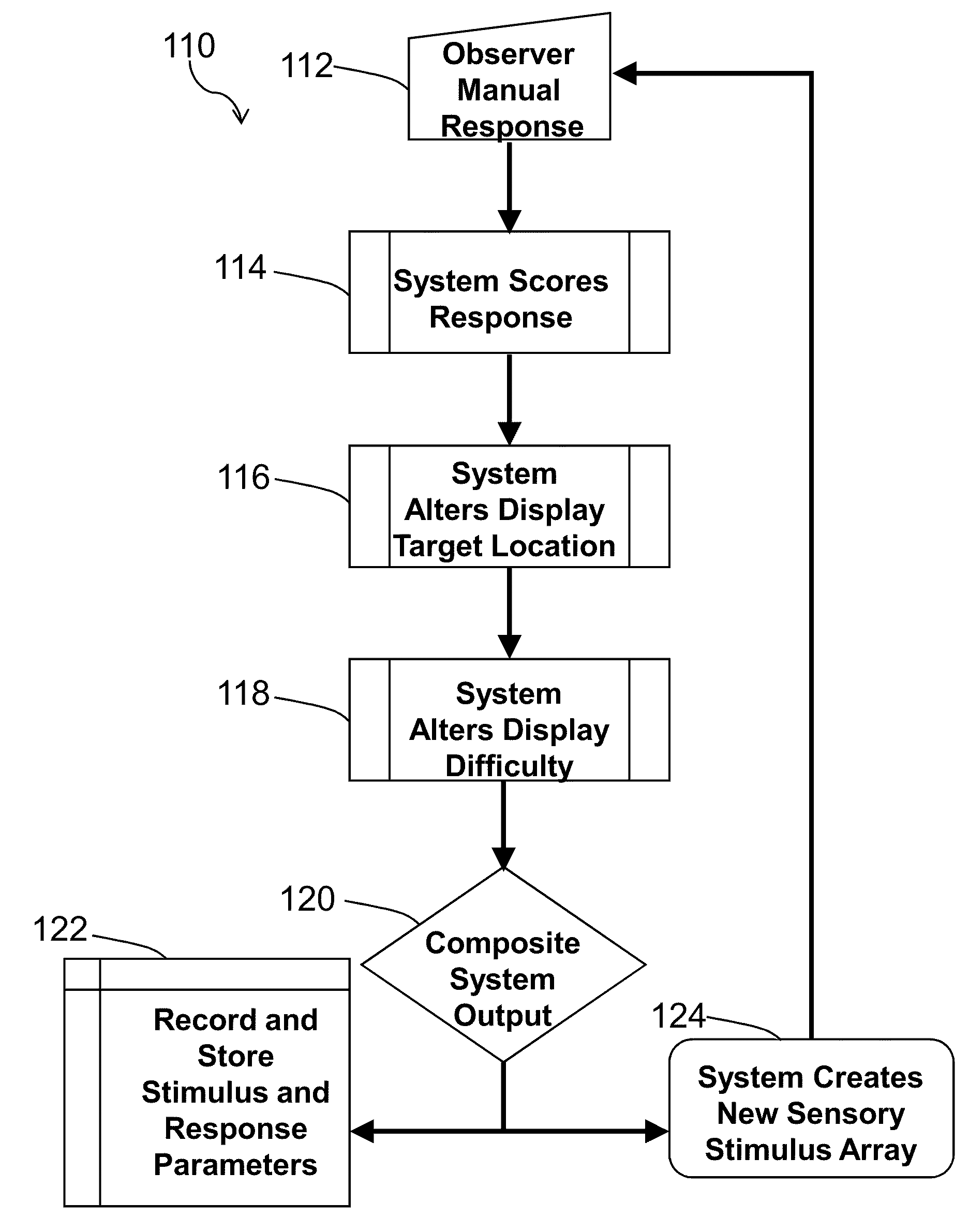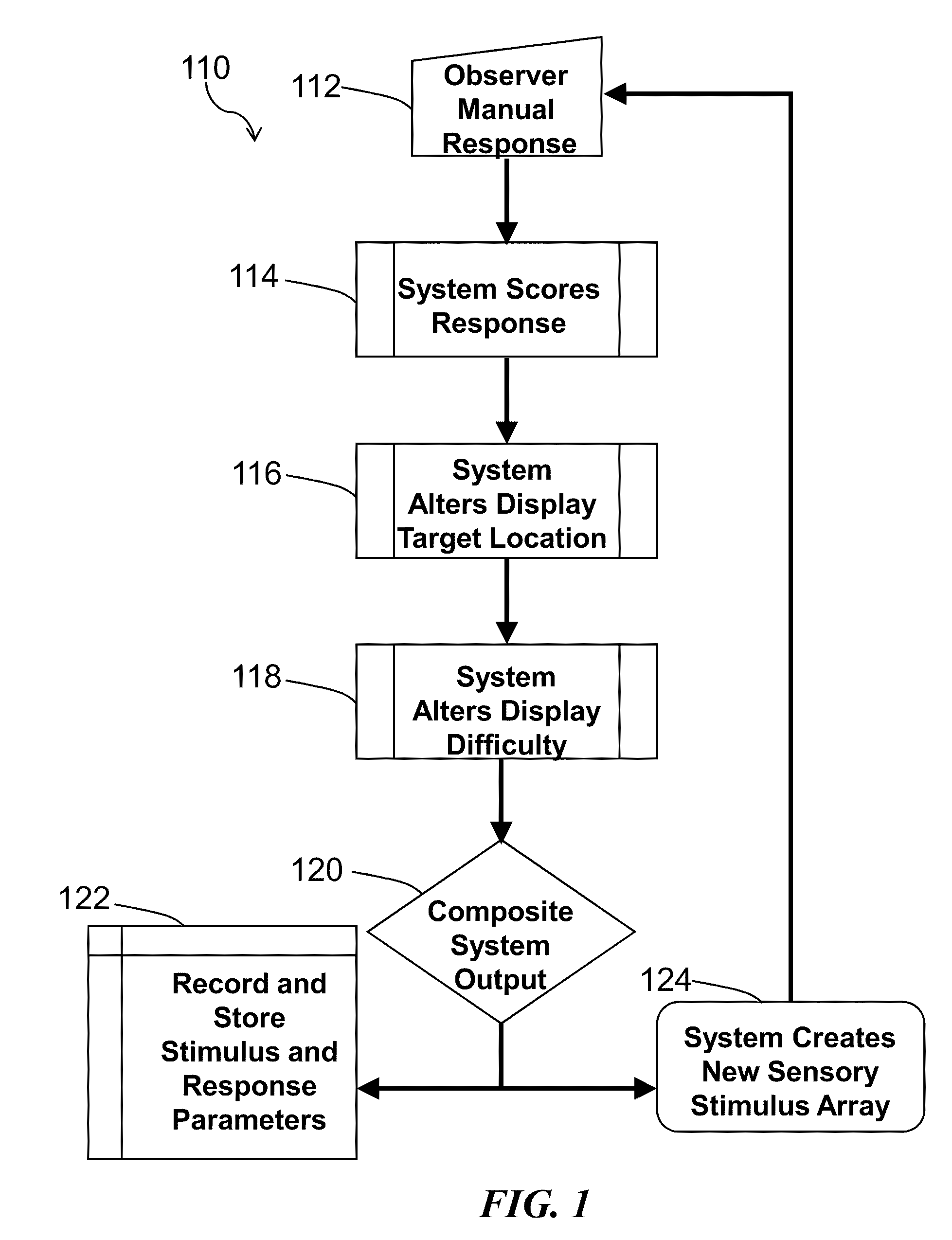Method and system for quantitative assessment of verbal memory
a quantitative assessment and verbal memory technology, applied in the field of psychophysics, can solve the problems of many visual abnormalities that are unlikely to be discovered, many visual abnormalities are impaired by neural dysfunctions, and the onset of alzheimer's disease is not easy to detect, so as to improve the effect of simplifying the complex experimental paradigm
- Summary
- Abstract
- Description
- Claims
- Application Information
AI Technical Summary
Benefits of technology
Problems solved by technology
Method used
Image
Examples
Embodiment Construction
[0113]The present disclosure is related to the subject matter disclosed in the following co-pending applications filed on Sep. 16, 2009 and each naming Charles Joseph Duffy as the inventor: Ser. No. 12 / 560,583 and entitled METHOD AND SYSTEM FOR QUANTITATIVE ASSESSMENT OF FUNCTIONAL IMPAIRMENT, Ser. No. 12 / 560,605 and entitled METHOD AND SYSTEM FOR QUANTITATIVE ASSESSMENT OF VISUAL MOTOR RESPONSE, Ser. No. 12 / 560,642 and entitled METHOD AND SYSTEM FOR QUANTITATIVE ASSESSMENT OF VISUAL CONTRAST SENSITIVITY, Ser. No. 12 / 560,683 and entitled METHOD AND SYSTEM FOR QUANTITATIVE ASSESSMENT OF VISUAL FORM DISCRIMINATION, Ser. No. 12 / 560,746 and entitled METHOD AND SYSTEM FOR QUANTITATIVE ASSESSMENT OF VISUAL MOTION DISCRIMINATION, Ser. No. 12 / 560,916 and entitled METHOD AND SYSTEM FOR QUANTITATIVE ASSESSMENT OF SPATIAL DISTRACTOR TASKS, and Ser. No. 12 / 561,010 and entitled METHOD AND SYSTEM FOR QUANTITATIVE ASSESSMENT OF LETTER IDENTIFICATION LATENCY.
[0114]In describing embodiments of the p...
PUM
 Login to View More
Login to View More Abstract
Description
Claims
Application Information
 Login to View More
Login to View More - R&D
- Intellectual Property
- Life Sciences
- Materials
- Tech Scout
- Unparalleled Data Quality
- Higher Quality Content
- 60% Fewer Hallucinations
Browse by: Latest US Patents, China's latest patents, Technical Efficacy Thesaurus, Application Domain, Technology Topic, Popular Technical Reports.
© 2025 PatSnap. All rights reserved.Legal|Privacy policy|Modern Slavery Act Transparency Statement|Sitemap|About US| Contact US: help@patsnap.com



